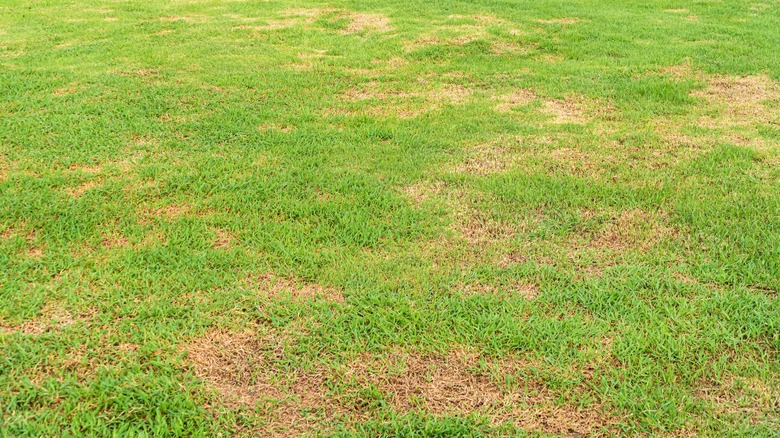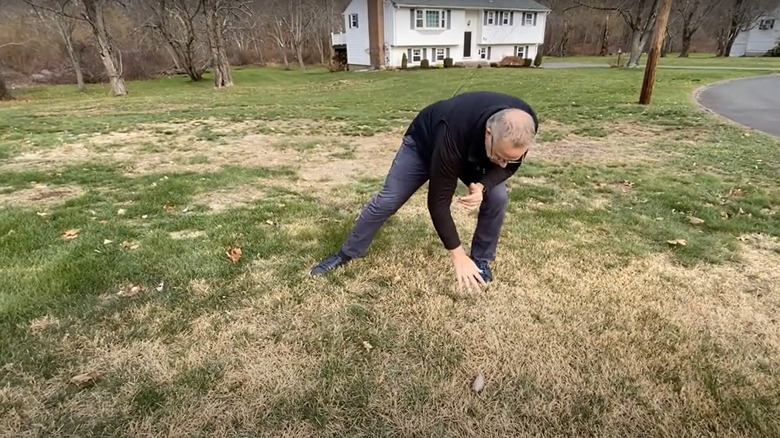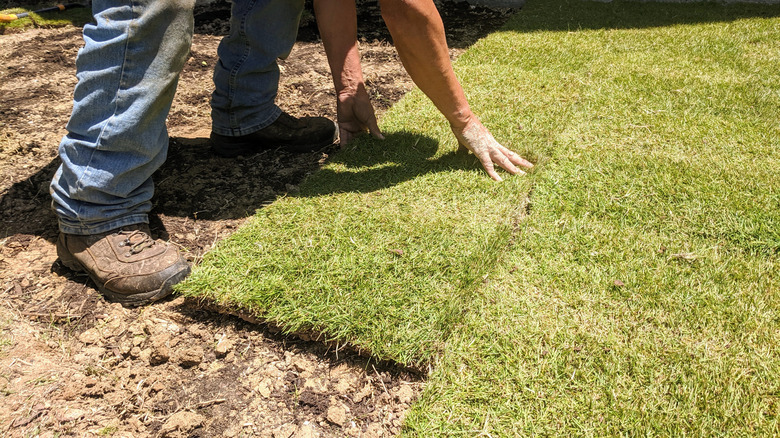Tell The Difference Between Dead And Dormant Zoysia Grass With This Quick Test
Walking on silken, soft, lush grasses is the dream of every green enthusiast. And if they're wear- and drought-resistant? Even better! Zoysia grass, a warm-season variety, ticks off these requirements. However, it may dim your enthusiasm when you notice discoloring, yellow, and tan patches on the turf. But before you begin exploring alternative sod options, conduct a quick tug test to confirm whether the grass is indeed dead or has gone to rest (dormant). Gently pull out the grass from the ground. If it slides out pronto, looking withered and wilted, know it's done for. But if it resists your yanking and remains firm in the soil, it's gone dormant and will turn green again when conditions improve.
Zoysia grass goes dormant during the fall (around October) until spring arrives in May. Its defense mechanism kicks in when environmental conditions turn unfavorable, such as the weather turning cold. Sometimes, it may also enter early dormancy when hot and dry temperatures persist for too long despite being valued as a heat-tolerant grass seed. So, confirming if it's inactive or has died down is necessary to plan your next course of action. A tug test does help but double-check its results through other tell-tale signs.
Cues to determine the grass' status
As mentioned, yanking out a few brown blades should offer insight into your grass' health. An easy pull, accompanied by the sward's sorry, wilted look, are tell-tale signs that its chances of returning are zilch. The roots are unanchored and non-functional and have likely turned rotten by now. If your landscape is swathed in irregular, rough, or jagged tan-brown patches despite showing no other disease or pest infestation markings, your zoysia grass is unfortunately dead. Another method to verify your prognosis is to water a small patch — dead tufts won't re-green.
Conversely, dormant grass remains rooted in the soil if pulled lightly. If you tug too strongly, the uprooted blades should still show healthy roots and crowns. Moreover, a dormant yard usually looks strawy rather than patchy. That being said, irrigating the foliage would push it out of inactivity and regain its vibrant hue if drought stress caused it to go dormant. However, the dense tuft is unlikely to rejuvenate during its regular dormancy schedule. At worst, watering it may lead to root rot and make it susceptible to attracting pests and diseases. If you're still unsure, contact a lawn care company for assistance.
Steps to follow after knowing the difference
If all signs point to the grass being dead, replanting the lawn is your only option. Once spring sets in — between May and June — clear out the dead foliage and prepare the ground for sodding. On the wet soil, spread out the sod and roll it thereafter. Irrigate the area daily to nudge the roots to anchor themselves deep into the yard. When established, return to the typical soaking schedule and follow adequate care practices. While you can seed the lawn instead, it's best not to follow through with it, as the slow-growing grasses can take almost two years to spread out.
To deal with the dormant grass blades, first understand the reasons for it. If the tuft is inactive due to heat stress, soak the roots weekly in ½ inch water to keep your lawn green. Generally, it can ride out the tough weather for 3 to 4 weeks. But if it's cold — below 55 degrees Fahrenheit or past the first seasonal frost — stick to irrigating every two weeks with ¼ inch of water to prevent the wear-resistant grasses from drying out. Also, treat the zoysia with a pre-emergent herbicide since it's vulnerable to annual weeds like henbit and chickweed during hibernation.


